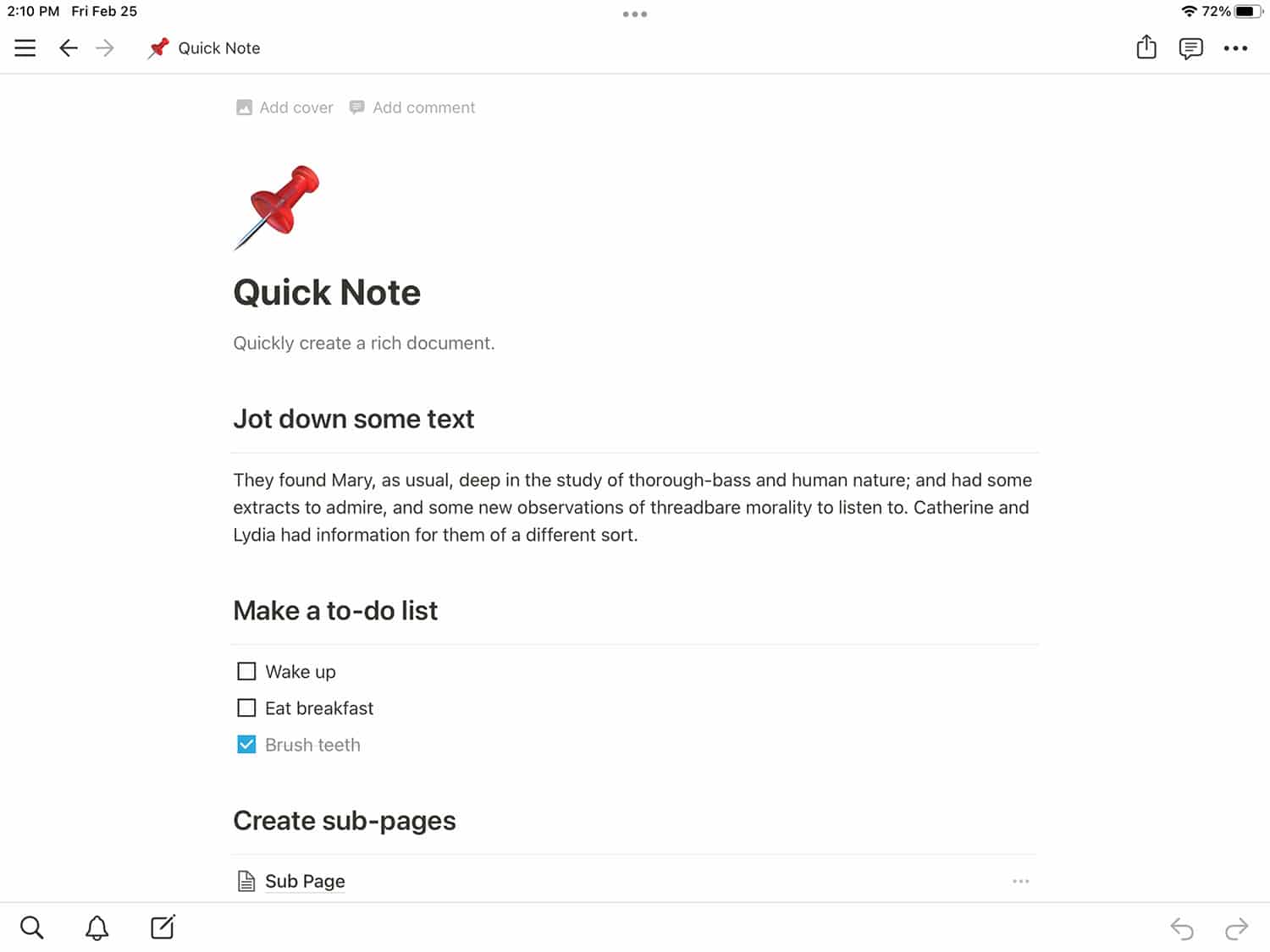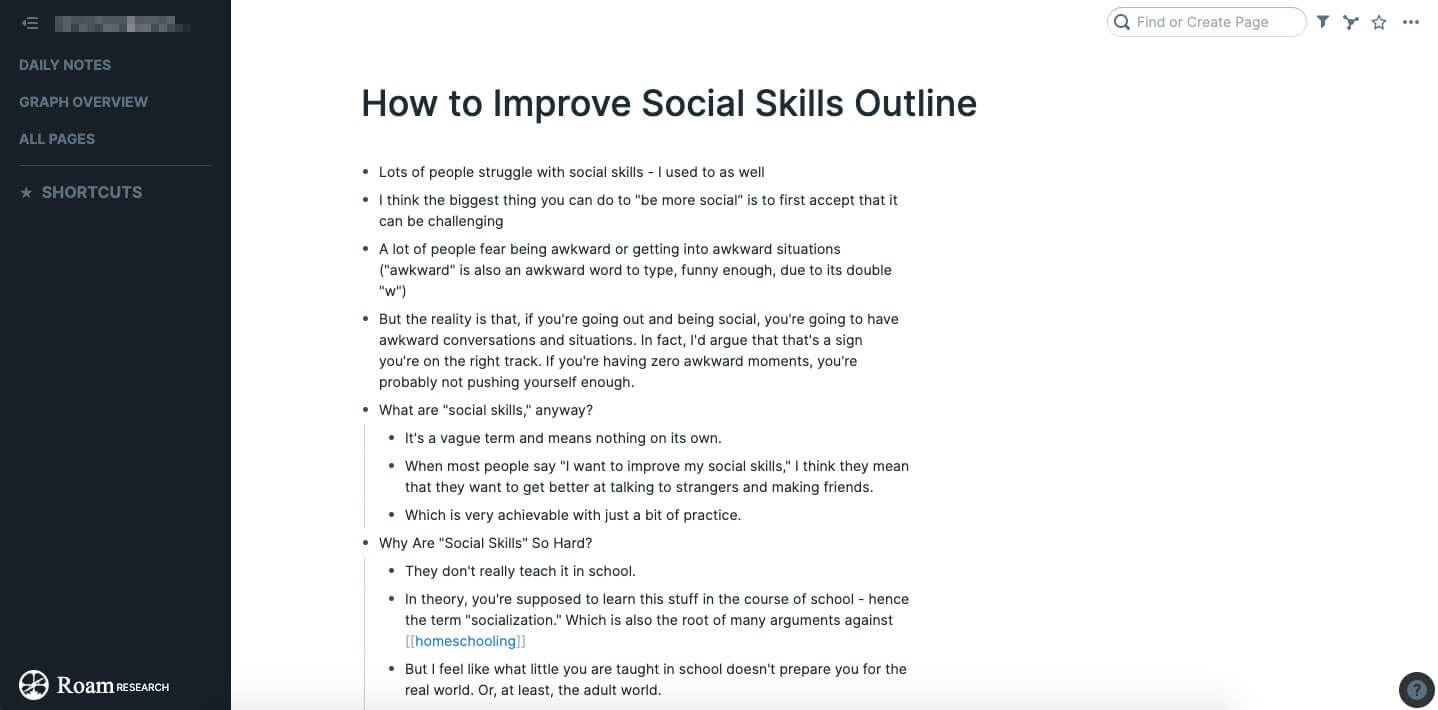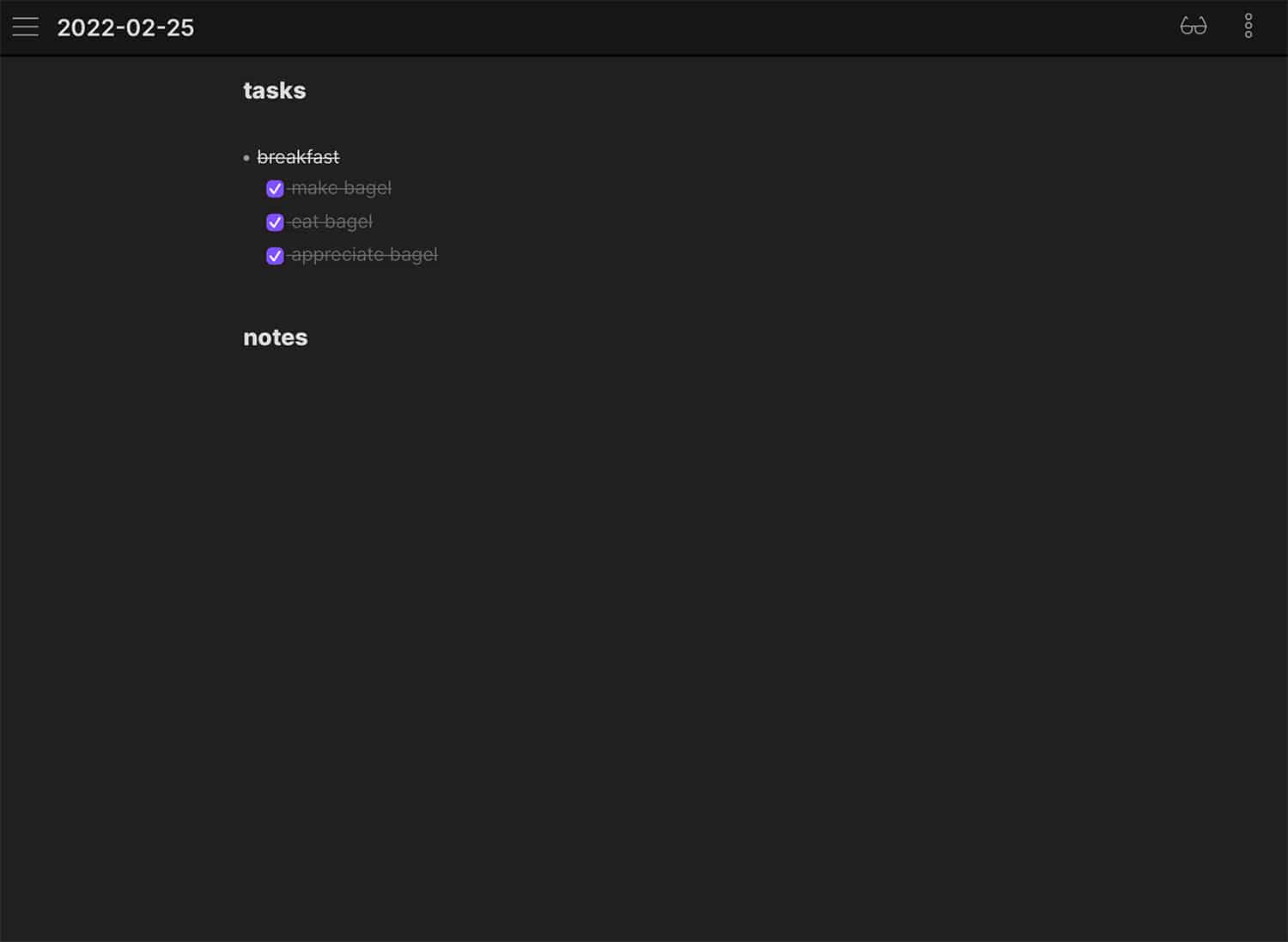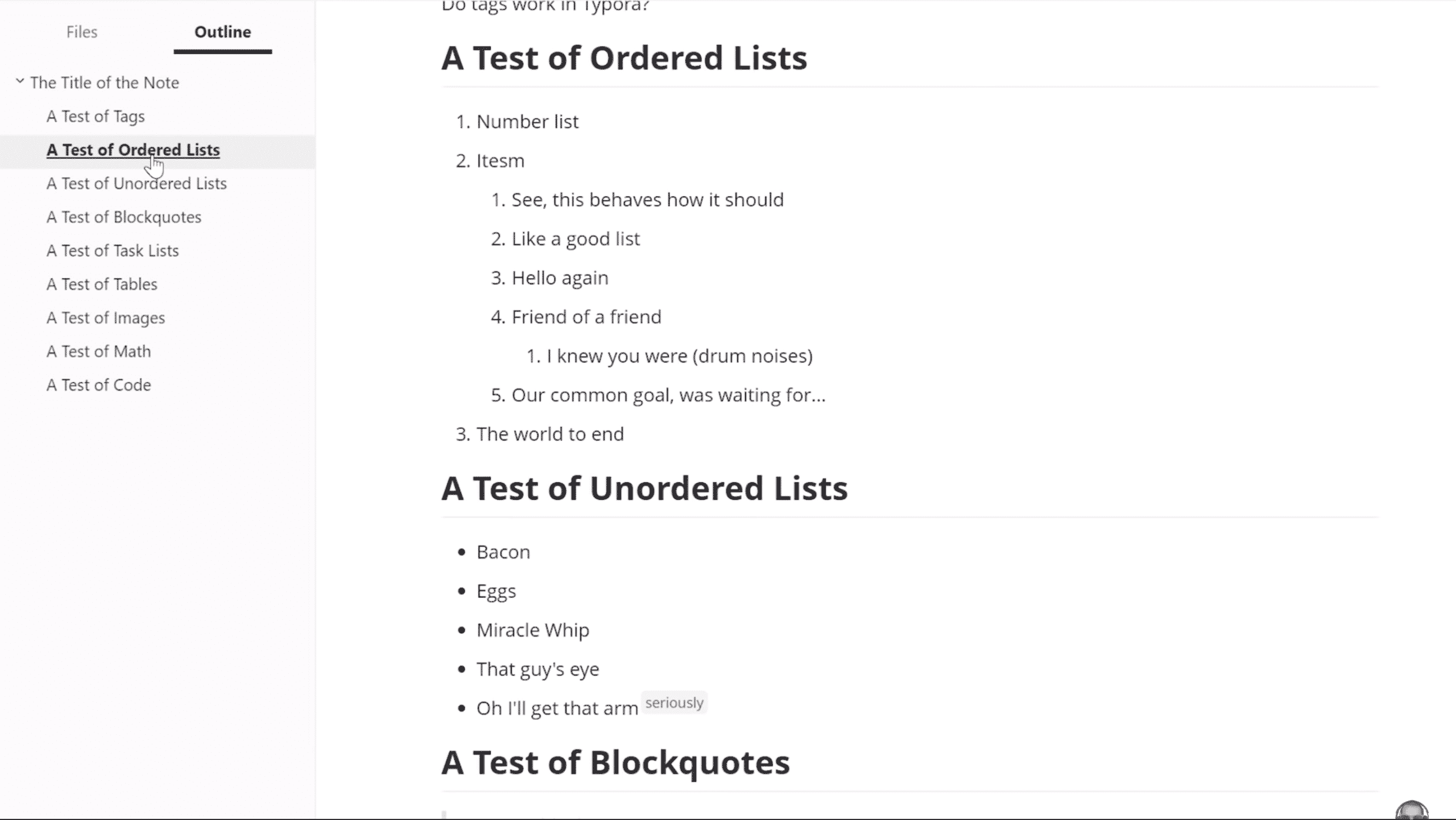Taking notes used to be so simple. You’d take out a sheet of parchment, dip your quill in ink, and get to writing.
Then a bunch of nerds got together and started inventing things — and that’s when note-taking got complicated. Suddenly we had to choose from different models of typewriters and competing keyboard layouts.
Later the computer showed up, and with it, we got GUIs and dozens of different writing applications. And then the Internet came along, bringing cloud syncing into the mix.
In 2023, we’re faced with a dizzying array of tools and apps for taking notes. How do you choose which one to use?
Luckily, we’ve done the research. After putting dozens of apps through their paces and testing every feature — from the writing experience to shortcuts to sharing capabilities — we’ve put together this list of the best note-taking apps currently available.
Read on to find out which tool is the right one for you, your devices, and your price range!
Looking for tips on how to actually take your notes? Once you’ve chosen your app, check out our guide to the 6 best note-taking methods.
The Top 11 Note-Taking Apps of 2023
1. Notion

Overview: Offers a powerful, database-driven note-taking experience that’s unlike most apps out there.
Pros:
- Flexible pages. Notion has a template engine that allows you to turn pretty much anything into an easily-duplicated template, including a multi-layered collection of pages. It also has great media embedding and previewing tools, including a gallery view for photos and videos.
- Powerful tables. Tables in Notion aren’t just charts; they’re databases. Think of Notion’s databases as Google Docs + Google Sheets. Every row in a table is its own Notion page that you can go into and update.
- Nested hierarchical organization. You’re probably tired of this. But Notion does this. You can even turn a set of text into a dropdown so you can roll it up when you want non-immediate information out of the way.
- Hybrid editor. Notion lets you write in Markdown or use normal keyboard shortcuts and UI elements to format your text.
- Free personal accounts. As long as you don’t mind the 5 MB file upload limit, Notion’s free plan offers everything you need to take notes.
Cons:
- No offline support. Currently, you need to have an internet connection to use Notion. The team is working to change this, but it’s a big limitation at the moment.
Price: Free
Platforms: Android, iOS, Mac, Windows, Web
Notion is one of the most flexible and powerful apps I've ever used. It can be a note-taking app, but there's also a database feature with multiple views (including Trello-style kanban boards and calendars) the ability to make anything into a template, and great collaboration features. At CIG, we use it for all of our team documentation, and I also manage every YouTube video I make with it.
2. Evernote

Overview: Evernote is a cross-platform note-taking app that’s great for processing hand-written notes and clipping articles from the web. The price, however, could be prohibitive on a student budget.
Pros:
- Multiple file formats. If you’re on a paid plan, Evernote can hold anything your professor throws at you: PDFs, PowerPoints, the 3 different sheets of requirements for one project. One fun extra: If you paste a Google Docs link, Evernote creates a Google Drive icon in-line and changes the URL to the name of the doc.
- Scanner for mobile. You can use Evernote as a scanner to take photos of pages of books when you don’t want to pay for photocopying. It also has optical character recognition.
- Web clipper for browsers. Great for saving those New York Times articles that are hidden behind a paywall so you can use them for your essay later. You can pick how much of the page you want to capture: everything, just the article text, or a highlighted selection of text.
Cons:
- Limited organization. Imagine your study area’s desk: You have notebooks lying around that contain class notes, random doodles, and frustrated journal entries. You can pile up semi-related notebooks into stacks. You can put sticky notes or flags into pages of the notebook that contain certain topics you want to refer to. That’s the extent of organization with Evernote: stacks, notebooks, notes, and tags.
- No Markdown support. If you typically write in Markdown to speed up your writing process, you’ll find its lack of support in Evernote frustrating.
- Pricey. If you use Evernote to scan documents and save research papers as I do, the 60 MB included in the free plan won’t cut it. And if you want to use it with more than 2 devices or use optical character recognition, you have to go Premium. At least students get 50% off Premium for a year.
Price: $7.99 / month
Platforms: Android, iOS, Mac, Windows, Web
3. OneNote

Overview: Microsoft’s free cross-platform note-taking app gives Evernote a run for its money, though the interface leaves something to be desired.
Pros
- Totally. Free. It has everything Evernote can do, but there’s no premium tier. So you get the full feature set out of the box.
- On basically all the platforms (for free). Just had to emphasize this: With OneNote, you get unlimited devices — a feature that other note-taking apps, like Evernote and Bear, keep behind a premium subscription.
- Freeform. Unlike Evernote, you can put text boxes everywhere on the screen for OneNote. You can draw. You can even change the background to look like a ruled notebook!
Cons
- Even less organization than Evernote. It lacks note sorting options, such as sorting notes by newest created or newest modified.
- Messy interface + Limited tagging capabilities. With OneNote, you have notebooks and dividers within notebooks. Then you can also indent notes within notes. But it’s all over the user interface: notebooks on the left, dividers up top, then notes on the right. I’m a messy note-taker myself, but c’mon.
Price: Included with a Microsoft 365 subscription (starting at $69.99 / year). Check if you have free access through your school or company.
Platforms: Android, iOS, Mac, Windows, Web
4. Roam Research

Overview: Roam Research takes a different approach to organization than most note-taking tools. You can instantly link one note to another to create a web of information, doing away with the need for tags and folders.
Pros:
- Delightful writing experience. Roam has strong support for Markdown, and the app is set up so that you can immediately begin writing when you open it.
- The setup of the app encourages daily journaling. The default page when you open the app is a “Daily Note” for the current day. I’ve found this encourages me to journal in the course of using the app, which often leads to new ideas.
- Fluid note-to-note linking. One of the core features of Roam is how easy it is to link notes (what Roam calls “Pages”) to each other. After you get the hang of the syntax, you’ll find yourself automatically linking notes (and ideas) together.
- Easy to visualize the connection between notes. Roam features a “Graph Overview” that shows the connections between your notes as a web. It’s an interesting alternative to the hierarchical view that most note-taking apps use.
Cons:
- No offline capability. Roam currently works only in the browser, and it requires an internet connection to access your notes. However, the founder claims an offline version of Roam is in development.
- Learning curve. Roam is very powerful once you learn how to use it, but expect to spend a few hours learning the syntax and overall philosophy of the app.
- Expensive. Access to Roam will cost you $15/month – more than any other tool on this list. Roam’s fans passionately argue that the tool’s design innovations more than warrant the price. We’ll leave that up to you to decide.
Price: $15 / month (after a 31-day free trial)
Platforms: Mac, Linux, Windows, Web
Here’s an overview of Roam Research from our founder Thomas Frank:
5. Bear

Overview: Bear features powerful Markdown capability and an excellent writing experience. The only downside is its lack of Windows support.
Pros
- Hybrid Markdown editor. You don’t have to imagine what your formatted Markdown will look like after you write because Bear formats text as you type.
- Simple organizational system. Using “#” and “/”, Bear lets you tag each note and nest those tags within each other. #NestedHierarchy
- Archive feature. A small but time-saving feature. Archiving a note takes it out of search and organization without deleting it.
- Clean writing experience. Bear looks good out of the box — writing is readable, simple, and clean. The Premium version gets you a half dozen free themes that look even slicker.
Cons
- Just Mac and iPhone. If you have a Windows setup…sorry.
- Limited organization After a few weeks of using Bear, I started bumping up against the limitations of its organization system.
Price: Free for most features. Upgrade to the Pro subscription ($1.49 / month) to sync your notes between devices and get additional export options.
Platforms: iOS, Mac
6. Apple Notes

Overview: Apple Notes offers solid organization and formatting features, though it lacks Markdown support and is (unsurprisingly) only for Apple devices.
Pros
- Free. If you have an Apple device, you have access to Apple Notes.
- Good-enough formatting tools. You get the usual bold, italics, and fonts.
- Allows cross-platform editing via the browser. No need for Google Drive/Dropbox workarounds. Just log in to your iCloud account from a browser and you can pull up your notes on a PC.
- Can create nested lists of hierarchical folders. This is surprising, given that some paid apps don’t have this feature. Well played, Apple.
Cons
- No hybrid Markdown. You can’t have it all in a free tool, can you?
Price: Free
Platforms: iOS, Mac
7. Google Keep

Overview: Google Keep offers a basic, cross-platform note-taking app that plays well with other Google tools. The only downside is its lack of organizational features.
Pros:
- Free. All you need is a Google account.
- Simple. Imagine how you use sticky notes, and Keep will make sense to you. You write something on the note, stick it in a place you’ll remember, then (ideally) transfer it somewhere permanent. The Google Keep interface even looks like a wall of stickies.
Cons:
- No hierarchical organization. There’s only one level of tags. Depending on how much organization you need, this may not matter.
Price: Free
Platforms: Android, iOS, Web
8. Standard Notes

Overview: Standard Notes takes security seriously and has powerful search features. The only downside is its lack of in-app image hosting.
Pros
- Most security-focused. Everything you write is encrypted by default, and only you can access it.
- Free (mostly). The free version of the app includes most features. But you’ll need to upgrade to a paid plan if you want support for rich text and Markdown.
- Powerful search. Custom tags are infinitely nestable, similar to Bear. You can also define and save custom searches based on different criteria.
- Supports all major devices. Including Linux.
Cons
- Limited image support. It can’t host in-app. You have to save your images elsewhere before you can save them in the app.
- Can’t drag-and-drop notes between folders and tags.
Price: Free for basic features. Upgrade to the Core Plan ($29 / year) to get rich text, Markdown support, and other features.
Platforms: Android, iOS, Linux, Mac, Windows, Web
9. Obsidian

Overview: Obsidian combines customizable knowledge organization features with a Markdown editor that’s a delight to use.
Pros
- Simple. Obsidian is based around Markdown and a simple (local) file/folder structure. This means that even if the app eventually disappears, you’ll still have all your data in a universally readable format.
- Highly customizable. If you have the skills, you can write your own Obsidian plugins. You can also turn features of the app on and off to suit your needs.
- Powerful organizational features. Obsidian lets you create links between pages, helping you to expand upon your previous work. It also lets you view the connections between your notes on a graph (similar to Roam).
- Cross-platform. Obsidian is available on basically any platform you could want.
- Works offline. You never need an internet connection to use Obsidian since all of your data is stored locally. In fact, you don’t even need an account to use the app.
Cons
- Limited image support. While it is possible to embed images within your notes, you’ll still need to use the Markdown syntax. You can’t drag and drop images into notes as you can in Notion or other apps on this list.
- Text-based. If you like highly visual notes, Obsidian won’t be for you. We recommend an option such as Notion instead.
- Syncing notes is a paid feature. If you want to sync your notes across devices, you’ll need to pay for Obsidian Sync (currently $10 / month).
Price: Free (for personal and educational use)
Platforms: Android, iOS, Linux, Mac, Windows
10. Ulysses

Overview: Ulysses is great for both note-taking and writing long-form essays or articles. But it lacks a free version and only works on Apple devices.
Pros:
- A fully-featured writing app. If you want an app that you can use throughout your entire writing process from research to writing and printing, then Ulysses is your pick.
- Focus mode. Many authors write books in Ulysses. But unlike some other heavy-duty writings apps, Ulysses gets out of your way with its Full-Screen focus mode.
- Customizable. Ulysses has themes, including Dark Mode. You can also choose from several different markup styles and publishing formats — it’s really quite flexible.
- Publishing to WordPress. After writing, editing, and formatting an entire blog post within Ulysses, I don’t have to log in to my WordPress dashboard to publish it anymore. Ulysses allows me to format images, tags, categories, and meta-data and upload all of them from the app.
Cons:
- Pricey. It’s $5.99 / month with no free plan, but you can apply for a student discount for 6 months and get it down to $1.99 / month.
- Mac and iOS only. As with Bear, the Ulysses app is exclusive to Apple devices. But if you just want to edit your files on a Windows computer, you can save them in a synced Google Drive or Dropbox folder and then edit the rich text file it provides.
Price: $5.99 / month
Platforms: iOS, Mac
11. Typora

Overview: Typora is highly customizable and works on all major operating systems, though it lacks online and mobile apps for working on the go.
Pros:
- Hybrid Markdown editor. It formats text as you type, and it’s faster than Slite.
- Focus Mode. It dims the text you’re not currently working on.
- Table of Contents mode. Like Slite, it allows you to zoom into headings and outlines.
- Themes. Lots of themes that you can customize with CSS — a language that lets you dictate exactly how you want your content presented.
Cons:
- No in-app storage. Since it’s just a Markdown editor, Typora doesn’t store notes in the app. Files are actually stored in your computer’s file system, meaning you can’t move notes around in the app.
- Desktop-only writing app. Typora doesn’t have a mobile app, but you can always complement it with a Markdown-editor mobile app such as iA Writer.
Price: $14.99 (one-time purchase)
Platforms: Linux, Mac, Windows
Take Notes Your Way
There are a lot of note-taking apps out there. And as with most recommendations, you have to figure out what works for you.
I hope that this list will help you decide on your note-taking app, whether it’s on this list or not.
Bonus: If you want to ensure that the rest of your productivity system is optimized as well, you might want to check out these guides:


